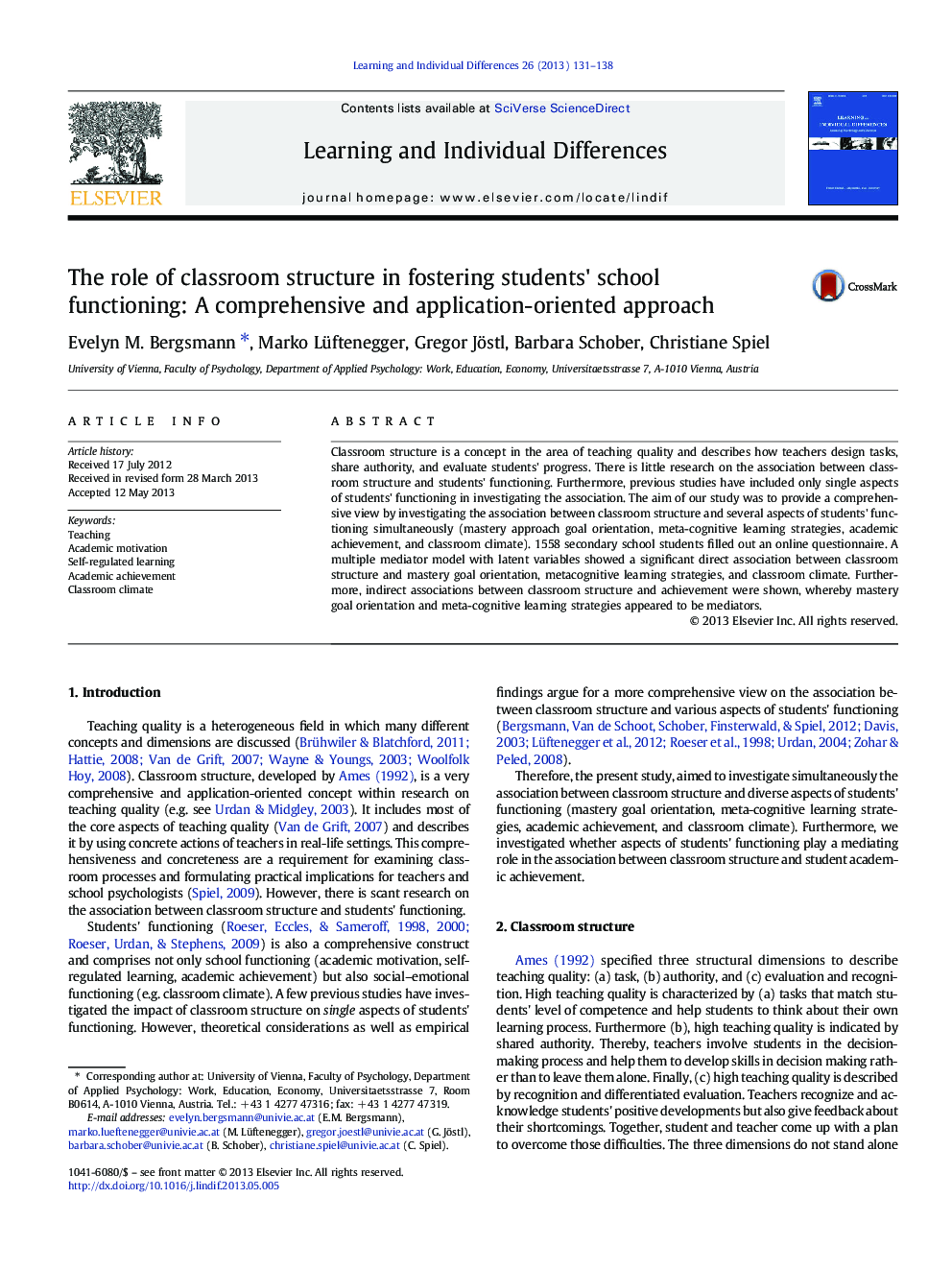| Article ID | Journal | Published Year | Pages | File Type |
|---|---|---|---|---|
| 364833 | Learning and Individual Differences | 2013 | 8 Pages |
•Classroom structure was investigated by using three dimensions (task, authority, recognition).•Students' functioning was investigated by using an integrative approach.•Data from 1561 secondary school students with a mean age of 14.3 years (SD = 2.2) were collected.•Structural equation modeling using a multiple mediator model was applied.•Classroom structure goes along with students' functioning.
Classroom structure is a concept in the area of teaching quality and describes how teachers design tasks, share authority, and evaluate students' progress. There is little research on the association between classroom structure and students' functioning. Furthermore, previous studies have included only single aspects of students' functioning in investigating the association. The aim of our study was to provide a comprehensive view by investigating the association between classroom structure and several aspects of students' functioning simultaneously (mastery approach goal orientation, meta-cognitive learning strategies, academic achievement, and classroom climate). 1558 secondary school students filled out an online questionnaire. A multiple mediator model with latent variables showed a significant direct association between classroom structure and mastery goal orientation, metacognitive learning strategies, and classroom climate. Furthermore, indirect associations between classroom structure and achievement were shown, whereby mastery goal orientation and meta-cognitive learning strategies appeared to be mediators.
